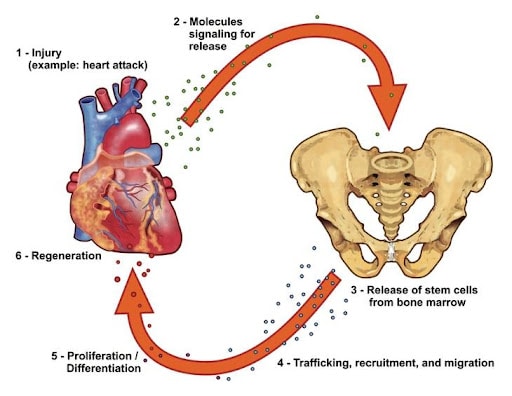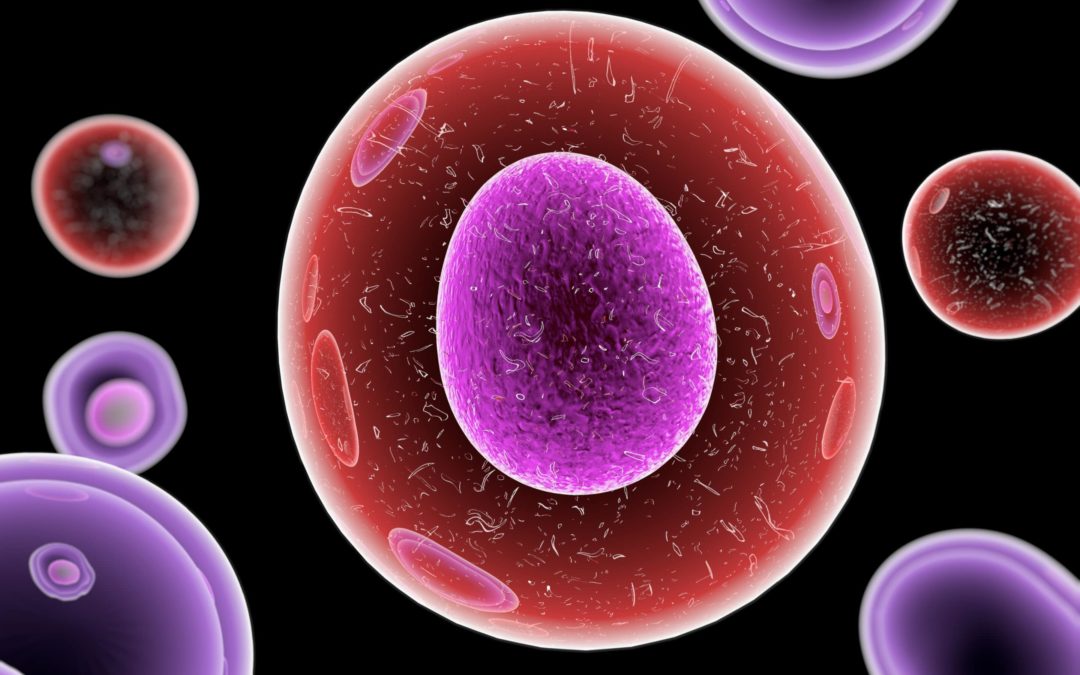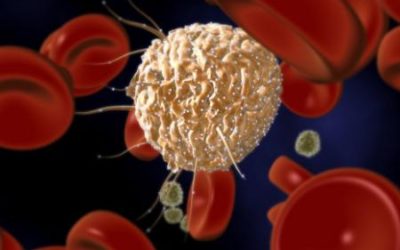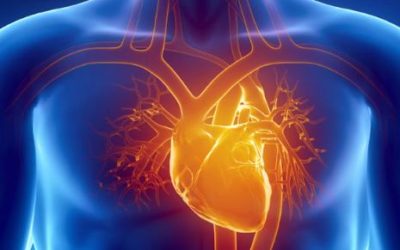
Adult stem cells (ASC) are well known for their role in the constant renewal of blood cells (red blood cells, lymphocytes, and platelets) and the regeneration of bone, ligament, tendon, and connective tissues. Until recently, it was believed that this was the extent of their ability to become other types of cells.
So how was the proper role of stem cells in the body discovered? How is it that with today’s level of scientific sophistication, we only recently discovered this phenomenon? If we think about it carefully, such a discovery amounts to nothing less than discovering a whole new system in the body.
The role of stem cells was discovered with the help of a naturally fluorescent molecule called green fluorescent protein (GFP). Because GFP is a protein, the gene for its production can be decoded, and the GFP-gene inserted into the nucleus of a stem cell. The cells generated from the fluorescent stem cell will all be fluorescent. By using this method, GFP made it possible to track stem cells as they left the bone marrow and moved into other tissues.
REPAIR SYSTEM
So, at the start of the 21st century, the development of GFP gave us a method to discover and understand the role of stem cells in the body. In brief, the bone marrow produces and releases stem cells, which are undifferentiated cells that circulate and migrate into damaged tissues, healing them and restoring normal function. This means that stem cells can help the body repair and renew by supplying new cells and replacing damaged or lost somatic cells all around the body.
For example, after a heart attack, the heart releases compounds that attract circulating stem cells to the heart supporting the repair of the heart. The same goes for the skin and all the other organs and tissues of the body. So, science has literally discovered a new system of the body!
To put this in perspective and fully understand the magnitude of this breakthrough, we need to understand what a system is. A system is an organ, or group of organs and tissues that either accomplish a specific task or secrete specific compounds, or both, all with the aim of supporting the health and survival of the organism. Let’s look at a few examples:

IMMUNE SYSTEM

Figure 3: White blood cells agregating around a pathogene.
The discovery of the endocrine and immune systems in the late nineteenth century was the last time science celebrated the discovery of a new system.
Immune cells are released from lymphoid organs (lymph nodes, for example) in the event of an infection. The immune system is made of lymphoid tissues, like the lymph nodes, that release a specific type of cell. These immune cells are attracted to sites of infections where they kill bacteria and virally infected cells.
ENDOCRINE SYSTEM
The endocrine system is comprised of endocrine glands and organs that play a vital role in human health by producing compounds that regulate the functioning of various organs and tissues at the cellular level. Some of the best-known examples of this are insulin helping sugar penetrate cells, thyroid hormones that stimulate metabolism, and several hormones produced by the adrenal glands that regulate fat metabolism, stress, and overall hydration. By far the most common endocrine dysfunction, affecting an estimated 425 million individuals worldwide, is diabetes.
Hormones produced and released by the glands in your endocrine system regulate nearly all your body’s operations. These molecules assist your body’s activities, including metabolism, growth and development, emotions, mood, sexual function, and even sleep.

Figure 4: Insulin entering a cell.
CARDIOVASCULAR SYSTEM

Figure 5: Red Blood Cells traveling through an artery.
The cardiovascular system is comprised of the heart and blood vessels, whose task is to pump and carry the blood to deliver oxygen, nutrients and other compounds to every cell of the body.
You don’t think about the cardiovascular system’s functionality because everything happens automatically. For example, when you get out of bed in the morning or just get out of bed after an extended period, gravity draws your blood to your legs. You don’t pass out because your nervous system detects a dip in blood pressure in the brain, and your arteries contract to raise blood pressure and restore normal blood flow to the brain.
When you exercise, your nervous system detects an increased demand for oxygen and nutrients in your muscles, causing your heartbeat and blood pressure to rise to ensure that all tissues are adequately supplied. It’s easy to dismiss it as “simply the heart, arteries and blood,” but it’s much more than that; it’s a marvel of biological engineering.
DIGESTIVE SYSTEM
The digestive system is made up of the gastrointestinal tract (also called the GI tract or digestive tract), the liver, the pancreas, and gallbladder. Its primary function is to breakdown nutrients into small compounds for your cells to absorb and use for energy, growth, and cellular repair.
Digesting food into nutrients is a complex process which is why to digest proteins, the stomach produces an acid nearly as strong as battery acid, which it must defend against by using a complex protective coating that is constantly replaced.
In the small intestine, special cells facilitate the movement of nutrients across the lining of your intestine to the bloodstream. All the blood from the intestine first goes to the liver where it is filtered to remove toxins and unwanted substances that could damage the body. These unwanted substances are excreted into the bile and eliminated through the feces. From the liver, the blood then transports amino acids, sugars, vitamins, and other compounds throughout the body.
Ultimately, because of the digestive system, your body is able to use sugars, amino acids, fatty acids, and a slew of bioactive molecules found in the food we eat and liquids we drink, to support your body needs for energy, metabolism, growth, and cellular repair.

Figure 6: Microvilli in the small intestine.
THE REPAIR SYSTEM
Like the other systems, the repair system is comprised of a specific tissue, the bone marrow, that make a specific type of cells, the stem cell, which will travel to anywhere in the body where there is damage in order to repair. At the dawn of the 21st century, science has literally discovered a new system of the body.

HOW IT WORKS
The discovery of the repair system has enormous implication regarding our understand of disease formation and aging. Simply put, when a tissue is wounded or undergoes considerable stress or degeneration, stem cells from the bone marrow are signaled to move into the tissue, where they proliferate and transform into tissue cells, assisting in the repair process.2-3 A decline in the efficiency of this natural repair system has been linked of the development of many age-related diseases. Conversely, supporting the role of stem cells in the body has been associated with significant benefits to human health.4
In conclusion, the body is made up of a series of complex systems that work together to allow us to survive and exist in this world, and the repair system is one of them. Without the repair system – as with the immune system, the cardiovascular system and so on – we would not be able to survive. The discovery of the repair and renewal system is leading to a novel understanding of health and wellness that is called to change the way we practice medicine.
References:
1. Drapeau, C. (2021). The Stemregen Effect: Tapping Into The Power Of Your Own Stem Cells (First Edition). Kalyagen.
2. Jensen GS, Drapeau C. (2002) The use of in situ bone marrow stem cells for the treatment of various degenerative diseases. Med Hypotheses. 59(4):422-8.
3.Drapeau C, Eufemio G, Mazzoni P, Roth GD and Stranberg S. (2012) The therapeutic potential of stimulating endogenous stem cell mobilization. In: Tissue Regeneration, GW Yip (Ed), Yong Loo Lin School of Medicine, National University of Singapore, Singapore, pp. 167-202.
4. Drapeau, C. (2021) Cracking the Stem Cell Code. 3rd Ed. Golden Swan Press, pp.295.
Endogenous Stem Cell Mobilization
Over the past decade the world has seen an unprecedented explosion in the field of stem cell research. Hardly a week passes by without an article in one of the main printed newspapers, describing a new breakthrough involving stem cells. Stem cell research is arguably today one of the most prolific fields of science.
Stem Cells, Health and Wellbeing
Stem cells can become cells of virtually any tissue and organ of the body, opening the possibilities to a wide range of benefits touching various aspects of human health.





Recent Comments